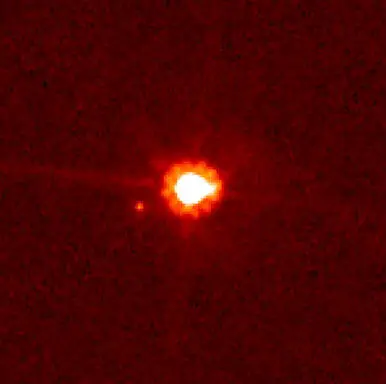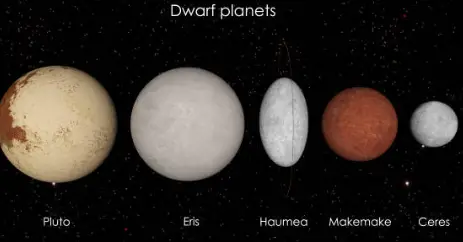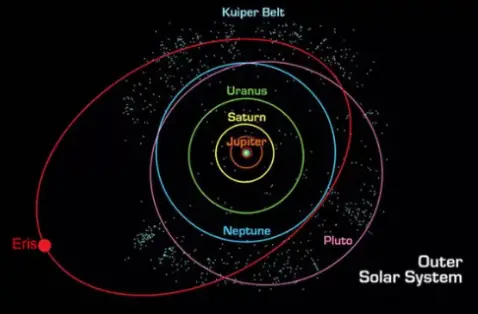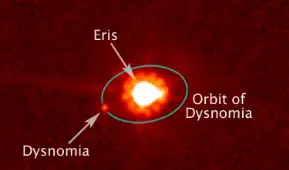
INTERESTING FACTS ABOUT ERIS !!!
Eris is defined as a dwarf planet.
Eris is one of five planets recognized as a dwarf planet. The other four are Ceres, Pluto, Haumea and Makemake.

The International Astronomical Union (IAU) decides the rules to what makes a planet. If they do not meet the three criteria required to be classified as a planet, they were giving the name of a dwarf planet.
The three criteria required to be called a planet are, firstly, it has to orbit the sun, secondly, its shape should resemble a ball like figure, and lastly, it has to be able to clear the area around its orbit, by pushing other objects out of its way, with its impressive size and gravity.
Eris was once a contender to be a tenth planet, but like Pluto, they failed to meet the criteria set out by the International Astronomical Union in 2006.
The orbit period for Eris on its travels around the Sun is 557.9 Earth years.
A day on Eris takes 25.9 hours, making its day very similar to ours.
Eris’s orbit is tilted at a 44 degree angle.
Eris measures 1,445 miles (2,326 km) in diameter.
Eris is located beyond the Kuiper Belt, in a region of space known as the “scattered disc.”

The Kuiper Belt is home to three recognized dwarf planets: Pluto, Haumea and Makemake.
Eris is the second largest dwarf planet (a very close second to Pluto).
Eris is so big that all of the objects in the asteroid belt would fit inside it.
The order of the dwarf planets to the Sun outwards is Ceres, Pluto, Haumea, Makemake and then Eris, being the furthest from the Sun.
Eris is the most distant dwarf planet, located beyond the orbit of Neptune.
Moon’s orbits planets and the planets orbit the Sun.
The gravity of the Sun keeps all the planets in their orbit, just like the planets gravity keeps moons in their orbit.
An orbit is a journey/path that an object takes in space. For example, stars, planets, moons, asteroids or spacecrafts.
Gravity is the invisible pulling force that works in space. Earth’s gravity is what keeps us on the ground and stops our oceans from spilling into space. Gravity exists everywhere in the Universe.
Eris was formed around the same time as the Sun, about 4.5 billion years ago.
Eris was named after the Greek goddess of strife and discord.
Eris has one moon called Dysnomia that orbits the dwarf planet every 16 days.

Dysnomia is named after the demon goddess of lawlessness and the daughter of Eris.
Eris and its moon Dysnomia, are currently the most distant known natural objects in the entire solar system.
The surface of Eris is extremely cold, so it seems very unlikely that life could exist there.
The temperature on Eris could be as low as -390°F or -234°C.
Eris was discovered by a team of scientists in 2005.
The scientists who discovered Eris are, M.E Brown, C.A Trujillo and D.L Rabinowitz.
Eris was originally given the nickname Xena, by the team of scientists who discovered it. Many other names were proposed, but finally the name Eris was given in 2006.
Eris was discovered around the same time as two of the other dwarf planets, Haumea and Makemake.
Scientists use Earth-based telescopes and satellites to try and work out Eris’s composition.
Eris is believed to have a rocky surface, but the fact it has never been visited, we will not know if its true for quite some time.
Eris has a distance of approximately 68 astronomical units away from the Sun. One astronomical unit is the distance from the Sun to Earth.
It would take around 13 hours for light to travel to us from Eris.
We would weigh twelve times less on Eris than we do on Earth.





